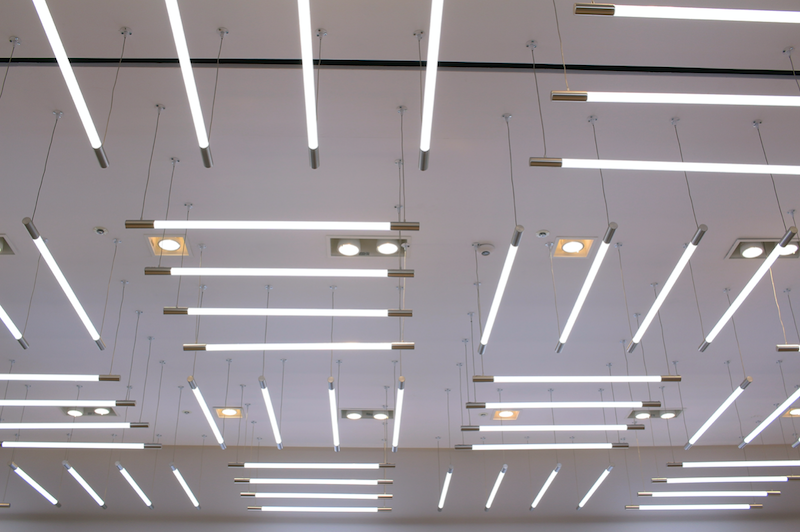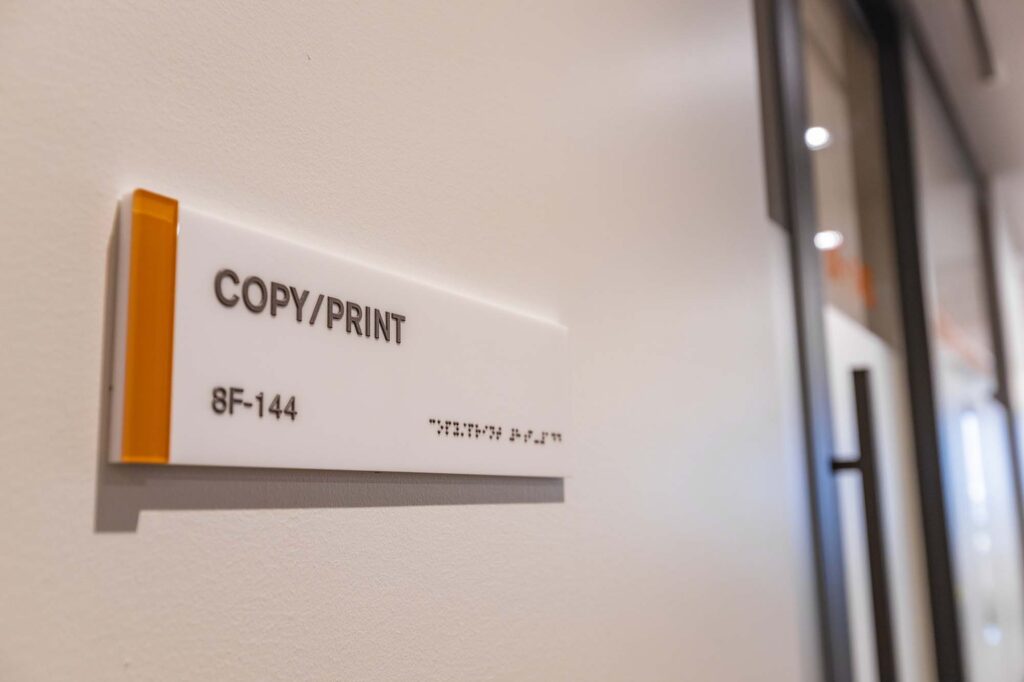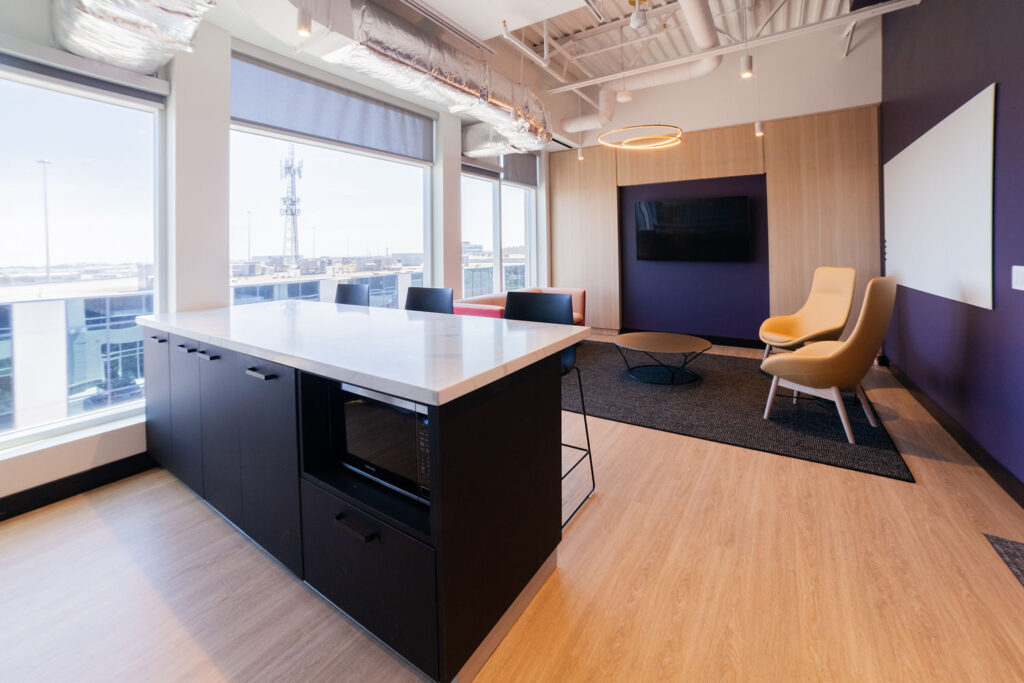Most employees spend a large majority of their day in an office. It’s no surprise then that optimizing workplaces to best suit employee’s needs is becoming more of a priority for businesses. In today’s age, businesses are beginning to discover the power of office design elements like lighting, structure and artwork. Lighting has a profound impact on an individual’s wellbeing, focus and mood.
Although it is often overlooked by many businesses, there is a significant link between light and circadian rhythms which is what determines our sleep cycle, relaxation, and stimulation. The right lighting has also been said to decrease depression and improve one’s energy, mood, alertness, and productivity. Poor lighting, however, can have the reverse effect. Eyestrain, blurred vision, headaches, and dry eyes are all short and long term effects of poor lighting. Whether we realize it or not, we rely heavily on lighting, but exactly how does the type of lighting we use affect our minds/bodies? Keep reading to find out!
Colour Speaks All Languages
Believe it or not, colour temperature plays an important role in employee wellbeing and productivity. Businesses that struggle with employee focus and retention might be surprised to discover the role office lighting has in those issues.
These temperatures are usually broken up into 3 sections:
Lower colour temperatures (up to 3,000K) are considered warm colours and range from red to yellowish-white. Light bulbs with this temperature range are ideal for decreasing stress and are usually used in relaxed settings like in a break room.
Mid-range colour temperatures (3,100K–4,600K) give off a cool white appearance. This temperature improves focus while still appearing welcoming. These light sources are usually used in large meeting rooms.
Higher colour temperatures (4,600K or more) are known as cool or daylight colours as they appear blue-white. These temperatures are closest to daylight temperatures and can boost focus, increase productivity, lower melatonin levels and improve mood. They are ideal for main working areas or rooms where teams can brainstorm or plan projects.
To make the most of their spaces, businesses need to be strategic about incorporating the right colour temperature in specific rooms. Part of that includes assessing how employees interact with their space. If employees meet in a specific room for brainstorming sessions or planning projects, businesses need to ensure the lighting is optimized to reflect that. For break rooms and lunchrooms, warm lighting can help reduce stress and reduce stimuli. Similarly, cold lighting can boost focus and decrease fatigue.
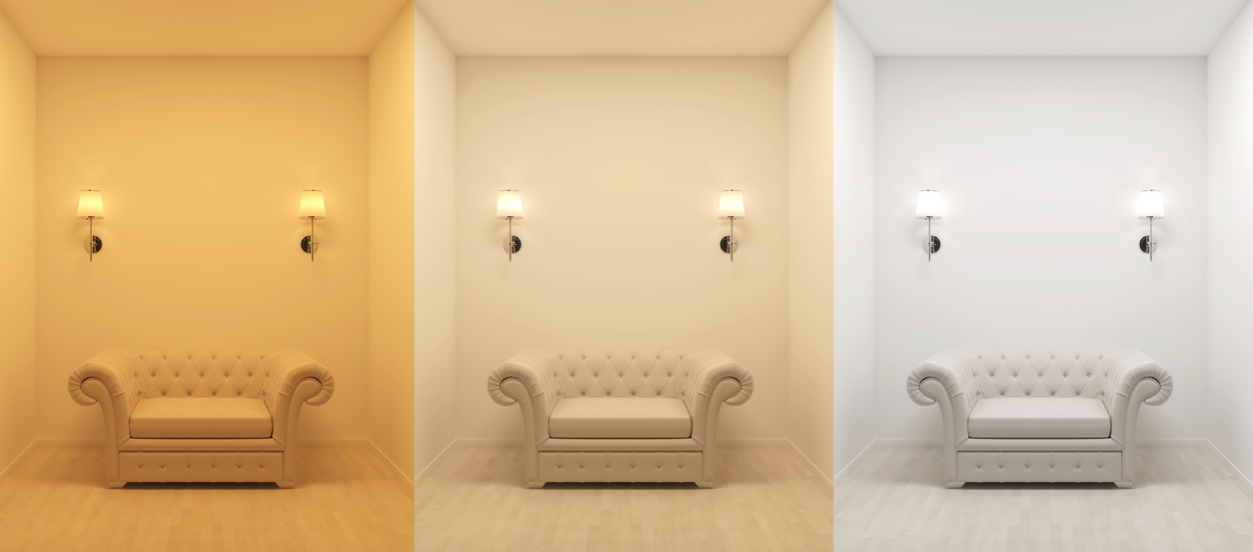
Daylight Is Best
If we had to choose, natural lighting is the most optimal lighting to improve employee wellbeing and productivity. According to a Harvard Business Review report which included over 1,600 North American employee responses, natural light is the number one differentiating factor for workplace environments. The same study discovered that 47% of employees admit that a lack of natural light leads to fatigue and low mood. We’re humans after all. Our connection to nature is undeniable. It’s no wonder Biophilic Design has truly taken off in the last couple of years.
However, we’re aware that it is unrealistic to simply rely on natural lighting in the office, especially during the winter months. Instead, businesses should maximize on the opportunity to incorporate as much natural lighting with large windows. Even more, the natural lighting should complement the artificial lighting of their office space.
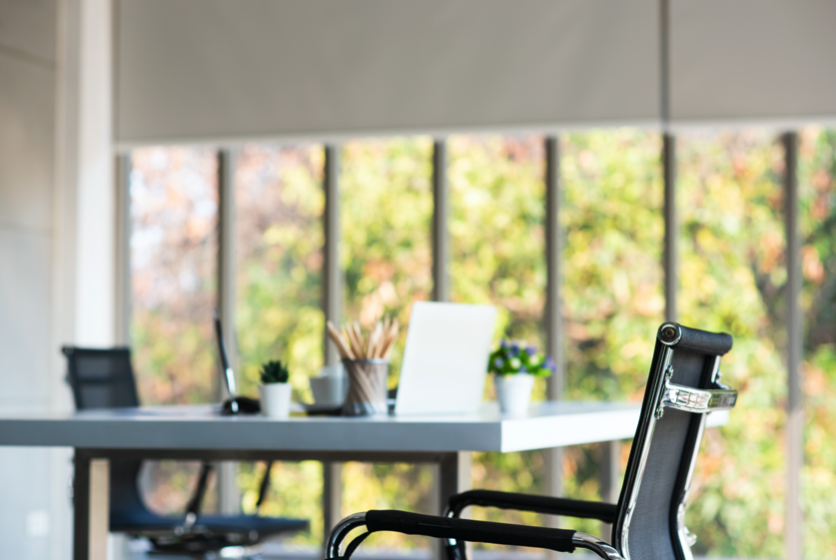
The Million Dollar Question: Fluorescent Or LED?
A few years ago, fluorescent lighting was every business’s go-to when it came to lighting. The lighting was bright and cheap, which to many businesses solved all their problems! However, businesses overlooked the negative impact that fluorescent lighting had on their employees. But, is fluorescent lighting that bad?
Fluorescent (~2700-5000K)
This type of light emits a high amount of blue light, which can cause eye strain, light sensitivity, and headaches. Another side effect of this lighting is low-frequency flicking, which is absorbed by the brain even if it’s not visible to the naked eye.
LED (~2700-3000K)
LED lighting can last around 6 times longer than CFLs and therefore, are better options for businesses. LEDs are also much more flexible than other lights considering they can be dimmed, so they use much less energy. LEDs are ideal for directional lighting like flashlights and desk lamps. Because of these features, LED technology typically costs more than fluorescent lighting but will last longer!
How We Can Help
As office design experts, it’s in our expertise to offer our clients the best solutions for their workplace needs, including incorporating the most suitable lighting to achieve their business goals. If you’re looking to find the right lighting for your office space, take a look at our gallery for our past workplace design projects. Need an expert opinion on how to improve your space? Contact us now! We are always happy to help!
